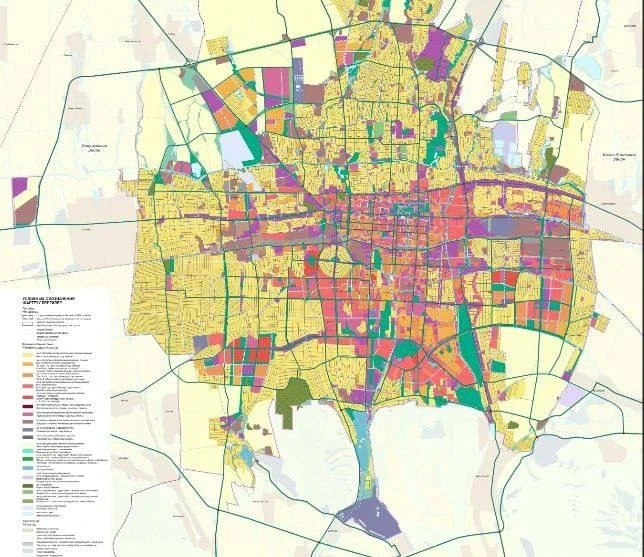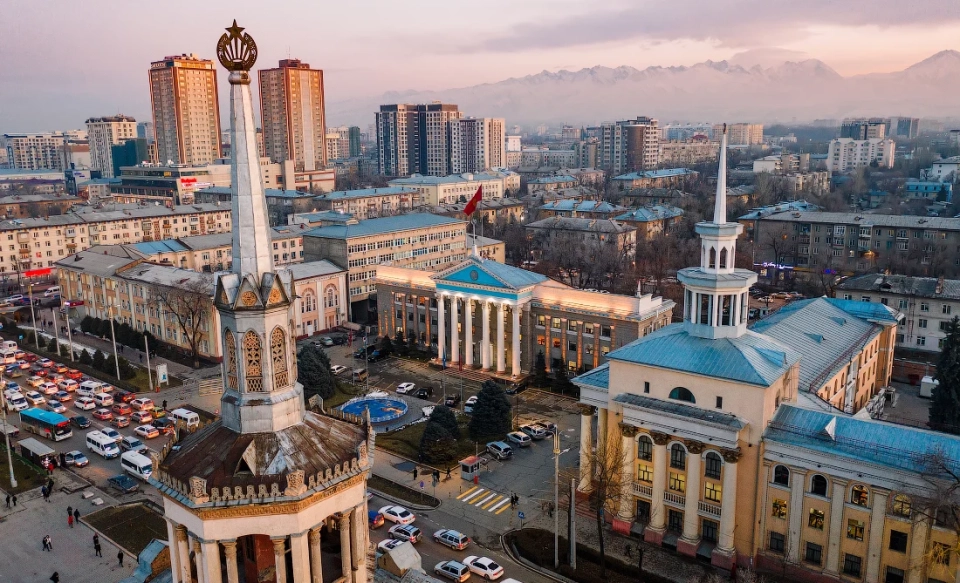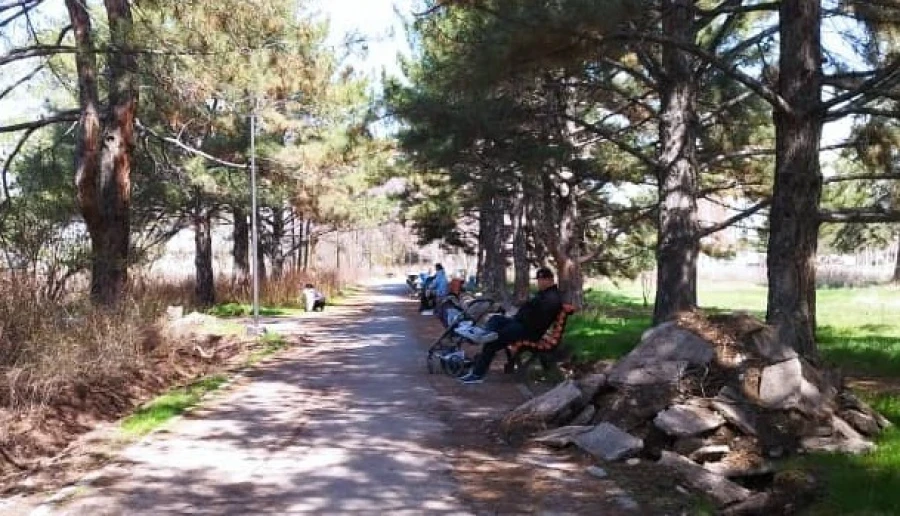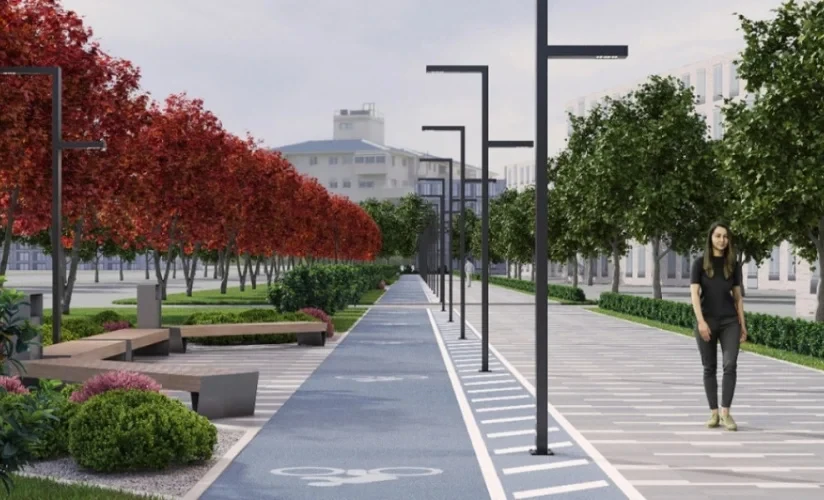This master plan is a strategic document that defines the long-term directions for the city's development, aiming to strengthen Bishkek as a financial and logistics center of Central Asia, diversify the economy, and create a comfortable urban environment.
24.kg reached out to specialists for their opinions on this master plan.
Tatyana Filatova, PhD in Architecture, Head of the Department of Architectural Renovation at the Kyrgyz Technical University
— How do you assess the master plan project? How realistic is it and how well does it meet modern requirements?
— The project was developed by highly qualified specialists with extensive experience. They took into account the data provided by our side and created the master plan based on this information. A master plan is always a project oriented towards the future, and for its successful implementation, it is necessary to consider demographic changes, the city's potential, and other factors. The specialists did everything possible to ensure the quality of the master plan, but the question of its practical implementation remains open.
There are trends indicating that no master plan is fully implemented—some are partially realized, while others to a lesser extent.
— What factors influence the degree of implementation of the master plan? [/b>
— Try planning your family budget for five or ten years. A master plan covers 25 years. Much depends on the demographic situation—how the population will change, how many people will seek to work in Bishkek. Is there a possibility of transferring administrative functions to the south of the country? Will Bishkek remain a cultural and industrial center like Almaty in Kazakhstan?
Master plans are developed for 25 years, but their implementation 15-20 years after design becomes a complex task, as forecasts often do not come true.
Master Plan-2050. Bishkek plans to introduce a limit on drinking water consumption
For example, it is assumed that in 25 years the population of the capital will be 2 million people. I have doubts about this; most likely, this number will be higher. And as soon as the population exceeds the planned figures, the question will arise about the impossibility of implementing the master plan in its current format. How can one keep the population within 2 million? In Soviet times, special measures were taken for this—workers were attracted, residency was restricted, and so on.
Proper urban zoning implies even development of the entire territory, including the Chuy Valley, Issyk-Kul, and Naryn regions. However, we currently have a million-strong metropolis that "sucks" resources from the entire republic, which is a serious weak point when the entire economy is concentrated in one city.
[b]— What other comments do you have on the master plan project? [/b>
— There are questions regarding statistical data. In recent years, there has been significant growth in the public administration sector. Administrative buildings and transport servicing this sector occupy a significant place in the city. However, according to the statistical data of the new master plan, the growth of this sector is minimal, while the social sector, on the contrary, shows significant growth. What will the city's residents be engaged in the social sphere in the next 25 years?
The city lacks kindergartens, schools, and clinics, indicating insufficient development of social infrastructure. More attention needs to be paid to this. However, it is unclear where this statistical data comes from. There is also a slight increase in the industrial sector.
Where in Bishkek are tram tracks planned to be placed?
Moreover, there is a decrease in per capita water consumption according to technical and economic indicators. How will this be achieved? Will there be restrictions on water use? Will costs increase, or will regulatory meters be installed? The problem lies not only in considering this scheme but also in understanding its feasibility. This is similar to politicians' promises before elections: it is one thing to talk and quite another to have the resources for implementation.
For example, the new master plan proposes closing Kyiv Street to private transport and transferring it to public transport. This is a correct step, but if it is necessary to widen the street for the tram line, how will this be done? There is no room for expansion. The same applies to other streets in the historical center; they cannot be widened without destroying the existing architecture, and this is one of the most painful issues for me as a specialist.
Every master plan for an existing city must take into account the historical and architectural reference plan, based on the values of historical buildings.
Bishkek is one of the four historical cities of Kyrgyzstan, along with Karakol, Osh, and Uzgen. However, the new project lacks a section dedicated to the historical and architectural reference plan, which, by the way, was also not included in the previous master plan, leading to public criticism. I do not know why the current developers did not take this into account. Perhaps the clients decided that historical monuments do not matter and will develop the area, including the historical center, as a new city.
This is indeed a serious problem. If the master plan does not include such a position, it means that Bishkek's status as a historical city has been ignored. Despite the work done in this area—there is a project for protection zones and a list of monuments—how will this component of the city develop in the future?
Almost all architectural monuments are concentrated in the historical center, which, according to the new master plan, will undergo significant construction with increased height.
[b]— What changes in urban infrastructure do you consider most relevant, and are they reflected in the project? [/b>
— The master plan is just the tip of the iceberg. It includes many sections detailing how many schools, hospitals, transport infrastructure facilities should appear, and how the transport system will develop.
What is the purpose of creating a master plan? So that all governing bodies and organizations can use it to determine key directions. These directions may intersect with existing development, and this will raise questions among citizens who own plots. They will be interested in whether they will receive compensation or not.
Thus, the master plan only indicates the way, and many other documents will emerge under it later. Therefore, it is too early to talk about any shortcomings or unrealistic ideas. This is just the beginning of the work. If this version of the master plan is approved, the next stages of development will begin. If serious comments arise, it will be adjusted.
In general, of course, the master plan affects not only specialists but also every resident of the city—it is their personal living space.
[b]
Belek Sarymsakov, architect, urban planner
— In modern conditions, there is a discussion abroad about whether to continue developing master plans or to switch to master plans that more conceptually define the paths of urban development.
The complexity of implementing master plans raises doubts. The higher the percentage of implementation, the better. For example, the current master plan from 2006 has only been implemented by 17-20 percent, with many changes and deviations from the original version.
— How does a master plan differ from a master plan? [/b>
— A master plan is characterized by its conceptual nature and flexibility. It is more "alive" and analyzes issues of social comfort and quality of life more deeply.
Centers for the elderly and children, circus, theater. What will be built in Bishkek by 2050
The master plan is primarily a technical document with legal force, based on which other urban planning documents are developed. It is mainly intended for specialists; an ordinary resident will find it difficult to understand.
The strategic master plan is focused on involving citizens, businessmen, and local authorities in discussing fundamental ideas as well as reviewing the finished document.
[b]— Is the master plan mandatory for execution? [/b>
— Changes concerning the capital must be made at the government level. However, in our country, leaders change quite frequently. During the time the current master plan has been in effect, six presidents and more than 30 prime ministers have changed.
The government determines the strategy for the capital's development, while the main executors are State Construction, City Council, the mayor's office, Bishkek City Architecture, and other municipal bodies.
In other countries, there are entire institutions dedicated to the implementation of master plans.
[b]— What factors could hinder the implementation of the master plan? [/b>
— This depends on the political will of the country's leadership, the level of development of the socio-economic base, regulatory legal framework, financing, and other factors...
The implementation of the master plan is a serious problem not only for Kyrgyzstan but also for many CIS countries.
Master Plan: the business center "Bishkek City" is planned to be concentrated in the Lenin district
The master plan is a comprehensive project with detailed explanatory notes and calculations concerning engineering networks, demographics, and other aspects. The master plan is executed on a large scale, indicating functional zoning as well as directions for the development of residential construction, transport hubs, and infrastructure for the next 20-25 years. After that, the central areas of the city and other important facilities will be worked out in detail.
Many residents are questioning the reality of the presented master plan. It is important to understand how the priority of its implementation will be determined—what is planned for the coming years and what can be postponed for the future.
[b]— Can you highlight the strengths and weaknesses of the new project? [/b>
— Since I have only reviewed publicly available information, it is difficult to draw any conclusions. I hope that at the meeting with specialists, there will be an opportunity to get more detailed information and ask questions.
At this point, it is hard to talk about strengths and weaknesses, but I will note that the project was executed by St. Petersburg architects at a high level, according to Soviet urban planning standards, which are respected worldwide, and in a short time. This is somewhat alarming, as according to regulations, significantly more time should be allocated for the design of such large projects as Bishkek.
According to the same standards, before developing the master plan, there should have been a settlement system for the Chuy Valley—the planning of the Chuy Economic Region.
For Bishkek, which is the center of the settlement system of the Chuy Valley, a convenient solution would be to relocate part of the metropolis's population to suburban areas (suburbs). A developed transport network and the possibility of relocating industries to small towns and villages within half an hour's transport accessibility from the capital will help stop the population growth of Bishkek and improve the ecological situation.
Over the last decade, the Union of Architects has repeatedly proposed developing a national settlement system, starting with the Chuy Valley as the most urbanized region. Unfortunately, our proposals have not been heard...
The lack of general information on the future development of engineering networks is marked as confidential, although, as any architect knows, engineering and transport infrastructure is fundamental when designing settlements. I would like to see how the master plan proposes to solve the problems of insufficient engineering networks in the capital, including power supply, wastewater treatment facilities, and water supply.
Increasing the percentage of multi-story construction is not a solution to the problem, especially considering the climatic conditions and the city's location in a foothill valley.
It is known that the most comfortable multi-story housing for residents is 4-7 stories, with permissible nine-story construction.
The higher the building, the more it affects the psychological and emotional state of residents, increasing the density of construction and the number of people per square meter.
In Europe, the historical center and residential buildings constructed 100-200 years ago are traditionally preserved with full consideration for reconstruction. This makes cities interesting from a historical and cultural perspective.
High-rise buildings are concentrated in specially designated areas—multifunctional business centers.
There are questions regarding Bishkek's engineering support in the coming years, as residents of the capital have been experiencing problems with its stability for several years.
This also concerns the ecological state of the urban environment...
[b]— Will Bishkek retain its unique appearance considering the active construction and population growth? [/b>
— One of the most important questions about the future of Bishkek is the creation of its unique image as the capital of an independent state.
In a recent resolution of the Cabinet of Ministers of Kyrgyzstan, the snow leopard was recognized as the national symbol of the country. So why not define a unique brand for Bishkek to form its distinctive image?
Master Plan-2050. Bishkek plans to increase average housing provision
If we look at the images of famous cities around the world, each capital has a clear program aimed at ideology and development strategy that carefully preserves their historical heritage and protects the environment.
Here we return to the topic of the master plan, which can be developed simultaneously with the master plan.
It is necessary to gather a team of creative people, including historians, marketers, architects, and businessmen, who can define the face of our city and hold a competition for the best solution.
[b]
Muradbek Beyshenbaev, Chairman of the Union of Architects of the Kyrgyz Republic
— You wouldn’t build a house without a project, so it is with a city—a document is needed that will be implemented in stages. We need to look 20-30, or even 50 years ahead.
The previous master plan was developed a long time ago; much has changed since then. Industrial, recreational, and residential areas are developing and expanding, and the industrial zone is moving beyond the city.
When creating a master plan, it is important to consider all resources, including water, accessibility of facilities, and transport schemes. Based on this, the capital should be developed.
If the city grows upwards, it will allow more people to be accommodated in a small area, but new questions requiring solutions will also arise. It is necessary to ensure the presence of green areas, parking lots, social infrastructure facilities, and fire safety.
The new master plan includes a new transport network, proposes types of public transport, and new district sub-centers for even development and decentralization, taking into account agglomerations around Bishkek and neighboring cities.
[b]— Will the new master plan be implemented? [/b>
— Undoubtedly, it must be implemented; there is no other way—the city must develop. If the project is approved by the public and experts, and the Cabinet of Ministers accepts it, then a detailed planning scheme will be developed.

















